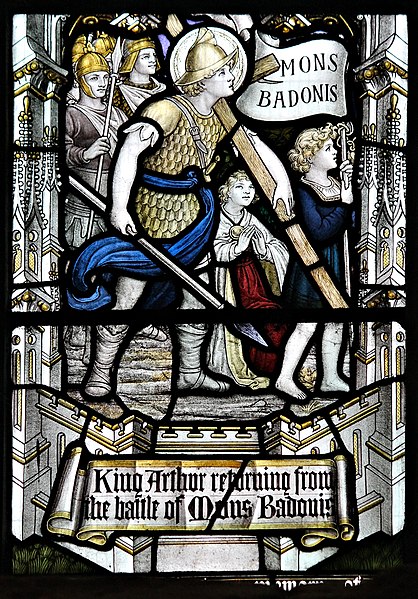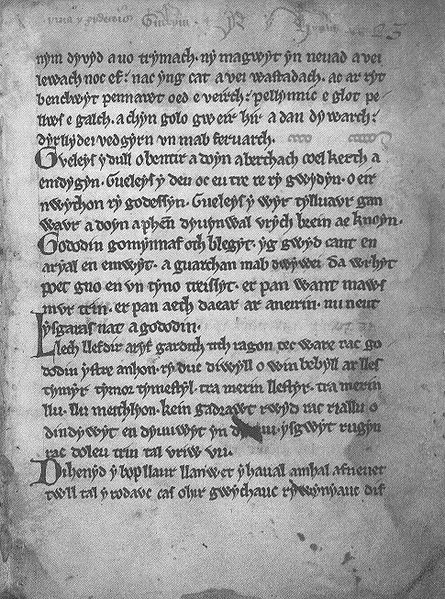Gawain, also known in many other forms and spellings, is a character in Arthurian legend, in which he is King Arthur's nephew and one of the premier Knights of the Round Table. The prototype of Gawain is mentioned under the name Gwalchmei in the earliest Welsh sources. He has subsequently appeared in many Arthurian tales in Welsh, Latin, French, English, Scottish, Dutch, German, Spanish, and Italian, notably as the protagonist of the Middle English poem Sir Gawain and the Green Knight. Other works featuring Gawain as their central character include De Ortu Waluuanii, Diu Crône, Ywain and Gawain, Golagros and Gawane, Sir Gawain and the Carle of Carlisle, L'âtre périlleux, La Mule sans frein, La Vengeance Raguidel, Le Chevalier à l'épée, Le Livre d'Artus, The Awntyrs off Arthure, The Greene Knight, and The Weddynge of Syr Gawen and Dame Ragnell.
Sir Gawaine the Son of Lot, King of Orkney, by Howard Pyle from The Story of King Arthur and His Knights (1903)
Gauvain's attributed arms
Galvagin (Gawain) depicted fighting Carrado (Carados) on the Italian Modena Archivolt (c. 1120-1240)
Gawain unwittingly fights Yvain in the Garrett MS. No. 125 manuscript of Chrétien's Knight of the Lion (c. 1295)
King Arthur, according to legends, was a king of Britain. He is a folk hero and a central figure in the medieval literary tradition known as the Matter of Britain.
Tapestry showing Arthur as one of the Nine Worthies, wearing a coat of arms often attributed to him, c. 1385
King Arthur returning from the Battle of Mons Badonis (or Mount Badon). First reference to Arthur, found in early Welsh literature. Stained glass in Llandaf Cathedral, Cardiff.
Supposed former gravesite of Arthur at Glastonbury Abbey in Somerset
A page of Y Gododdin, one of the most famous early Welsh texts featuring Arthur (c. 1275)








